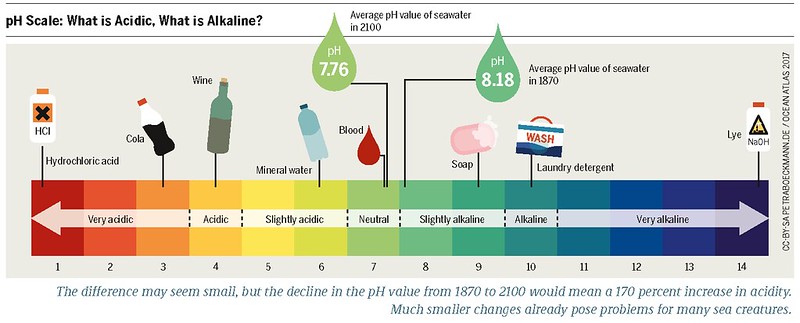The pH level of cold brew coffee typically ranges from 4.85 to 5.10, slightly higher than hot brewed coffee, which can have a pH as low as 4.8. This difference in acidity can have a significant impact on the taste and digestibility of the coffee.
Understanding the pH Level of Cold Brew Coffee
The pH level of coffee is influenced by various factors, including the type of beans used, the roast level, and the water used for brewing. Cold brew coffee, in particular, has a slightly higher pH level compared to hot brewed coffee, which can be attributed to the brewing process.
During the cold brew process, the coffee grounds are steeped in room temperature or cold water for an extended period, typically 12-24 hours. This longer extraction time allows for a more gradual and gentle extraction of the coffee’s compounds, resulting in a lower overall acidity.
Factors Affecting the pH Level of Cold Brew Coffee
-
Coffee Bean Variety: The type of coffee beans used can impact the pH level. Different coffee bean varieties have varying levels of natural acidity, which can influence the final pH of the cold brew.
-
Roast Level: The roast level of the coffee beans can also affect the pH. Darker roasts tend to have a slightly higher pH, while lighter roasts may have a lower pH.
-
Water Quality: The quality and mineral content of the water used for brewing can impact the pH level of the final cold brew. Using filtered or purified water can help maintain a consistent pH.
-
Brewing Time: The longer the coffee grounds are steeped in water, the more time the acids have to extract, which can result in a slightly higher pH level.
Acidity vs. pH in Cold Brew Coffee
It’s important to note that acidity in coffee is not the same as the pH level. Acidity in coffee refers to the perception of sharpness or brightness in the flavor, which is influenced by various compounds, including organic acids.
Cold brew coffee has been found to have lower overall acidity compared to hot brewed coffee, even though the pH levels may be similar. This is because the cold brewing process extracts fewer of the acidic compounds that contribute to the perceived acidity in the coffee.
Benefits of the pH Level in Cold Brew Coffee
The slightly higher pH level of cold brew coffee can be beneficial for individuals with acid reflux or other digestive issues. The lower acidity can be gentler on the stomach, making cold brew a more comfortable option for those who experience discomfort from traditional hot brewed coffee.
However, it’s important to note that caffeine can also contribute to acid reflux and other digestive issues, regardless of the coffee’s pH level. Therefore, it’s essential to monitor individual tolerance and adjust consumption accordingly.
Preparing Cold Brew Coffee at Home
To make cold brew coffee at home, you can use a simple immersion method. This involves steeping coarsely ground coffee in room temperature or cold water for 12-24 hours, then filtering out the grounds.
Here are the steps to make cold brew coffee at home:
-
Choose High-Quality Beans: Select freshly roasted, high-quality coffee beans for the best flavor and pH balance.
-
Grind the Beans: Coarsely grind the coffee beans to allow for optimal extraction during the steeping process.
-
Steep the Coffee: Place the ground coffee in a container and add room temperature or cold filtered water. Stir to ensure all the grounds are submerged.
-
Steep for 12-24 Hours: Allow the coffee to steep for 12-24 hours, depending on your desired strength and flavor profile.
-
Filter the Coffee: After the steeping time, use a fine-mesh strainer or a coffee filter to remove the grounds from the liquid.
-
Store and Enjoy: Transfer the cold brew concentrate to an airtight container and store it in the refrigerator for up to 7-10 days. When ready to serve, dilute the concentrate with water or milk to your desired strength.
Food Safety Considerations
When it comes to cold brew coffee, it’s important to practice good food safety habits to ensure the safety and quality of the final product. Contaminants and bacteria can potentially grow in the cold brew if it is not stored properly.
To maintain food safety, it’s recommended to:
- Use clean equipment and utensils for brewing and storing the cold brew.
- Store the cold brew in the refrigerator at a temperature below 40°F (4°C).
- Consume the cold brew within 7-10 days of brewing for best taste and quality.
By following these guidelines, you can enjoy the benefits of cold brew coffee while ensuring it is safe and of high quality.
Conclusion
The pH level of cold brew coffee, typically ranging from 4.85 to 5.10, is slightly higher than hot brewed coffee. This difference in acidity can impact the taste and digestibility of the coffee, making cold brew a potentially better option for individuals with acid reflux or other digestive issues.
When preparing cold brew coffee at home, it’s essential to use high-quality beans, follow proper brewing and storage techniques, and consider food safety practices to ensure the best possible experience. By understanding the pH level and acidity of cold brew coffee, you can make informed choices about your coffee consumption and enjoy the unique benefits it offers.
References:
– One Great Coffee. (2021). Is Cold Brew Coffee Less Acidic? Here’s What You Need to Know! Retrieved from https://www.onegreatcoffee.com/blogs/latest-news/is-cold-brew-coffee-less-acidic
– RISE Brewing Co. (2019). The 101 on Coffee Acidity. Retrieved from https://risebrewingco.com/blogs/on-the-rise/the-101-on-coffee-acidity
– Reddit. (2020). Is cold brew really better for acid reflux? Retrieved from https://www.reddit.com/r/Coffee/comments/f5tuua/is_cold_brew_really_better_for_acid_reflux/
– PubMed. (2018). Acidity and Antioxidant Activity of Cold Brew Coffee. Retrieved from https://pubmed.ncbi.nlm.nih.gov/30375458/
– Perfect Daily Grind. (2024). New study on cold brew food safety: Why coffee shops should pay attention. Retrieved from https://perfectdailygrind.com/2024/02/new-study-on-cold-brew-coffee-food-safety/

